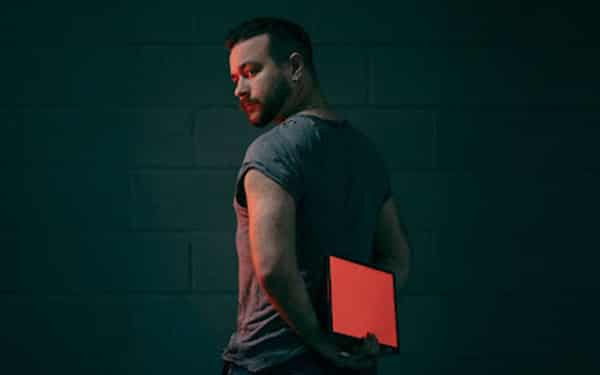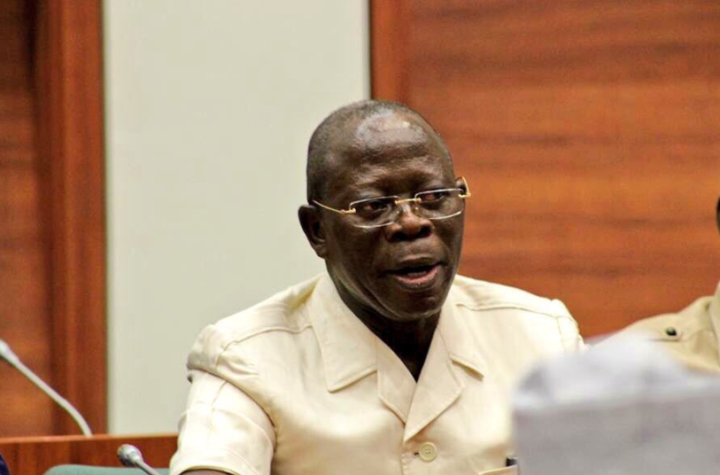The air in Alexey Kotolevskiy’s studio hums with the quiet intensity of a laboratory. Sketches of geometric prisms and lavender fields paper the walls, while a digital screen flickers with renderings of a fintech app interface. An art designer with the precision of an engineer,
Kotolevskiy leans over a tablet, fine-tuning the gradient of a logo that will soon embody an entire startup’s philosophy. “Every pixel must feel intentional,” he says, zooming in until the shapes dissolve into abstract dots. “If it doesn’t tell a story, it’s just noise.”
This level of precision has made Kotolevskiy a sought-after architect of brand identity. In an age when consumers scroll past more than 10,000 ads per day, his work slices through the noise by transforming brands into visual stories that speak to something primal.
Drawing from cognitive science, global design trends, and a self-developed philosophy he calls emotional minimalism, Kotolevskiy proves that storytelling isn’t just art—it’s survival in the attention economy. Kotolevskiy’s position as art director for many prestigious and well-known organizations has been a critical role because shaping their brand involves more than just his unique, innovative artistic contribution, but also the creative decision-making power that makes each brand stand out in a sea of others.
Take, for example, his work with Auto Transport Chicago, the largest auto-hauling company in the U.S. Alexey reimagined their entire visual language, replacing outdated “auto-brutalist” motifs with a cinematic, story-first approach. Their recruitment campaigns now resemble web series, featuring characters on emotional journeys toward success in the car-hauling industry.
This inventive reframing increased audience engagement by over 60% and played a key role in helping the company scale, creating hundreds of new jobs across multiple states.
The Algorithm of Emotion: Why Brains Crave Visual Narratives
The human brain processes images in just 13 milliseconds—an astonishing 60,000 times faster than text. This evolutionary advantage explains why visual storytelling is so deeply effective. As Kotolevskiy puts it, “We’re not designing logos—we’re coding memories.”
This strategy draws on the psychological principle of narrative transportation—the phenomenon where audiences internalize stories so deeply that they adopt their perspective. In one project, Kotolevskiy constructed a visual experience rooted in sunlit lavender fields and handcrafted textures. With soft palettes and organic forms, he invited viewers into a fully sensorial journey—one that lingered long after the screen faded.
From Pixels to Prisms: The Anatomy of a Visual Story
Kotolevskiy’s studio rejects the notion that design is merely visual.
“A brand’s visual language should function like a film score,” he explains. “It should steer emotion without a single word.”
His projects often integrate:
- Symbolic minimalism: distilling complex ideas into universal symbols (like a prism representing unity)
- Color semiotics: leveraging hue to stimulate specific neurotransmitters (lavender tones to promote calm via serotonin pathways)
- Kinetic typography: animating text to reflect brand personality (slow fades for luxury, sharp cuts for tech)
When addressing sensitive topics like mental health, Kotolevskiy avoids clichés—no green leaves, no brains. Instead, he might use an abstract ripple effect to signify how small actions can yield long-term impact. For him, impactful design doesn’t describe; it evokes, using nuance and restraint to honor the complexity of the subject.
The Global Playbook: Storytelling Without Borders
Kotolevskiy’s global body of work demonstrates how visual storytelling can transcend language, culture, and education. In communities where conventional messaging fails, he crafts imagery that speaks universally. His metaphoric, emotionally charged visuals convey transformation, empowerment, and sustainability without uttering a word.
His branding campaign for the science city of Dubna in Russia is a prime example. Tasked with shaping the visual identity of an entire city—home to a major nuclear research institute—Alexey created a logo in which letters evolved from particle structures into harmonious, luminous forms.
It symbolized the transformational nature of scientific inquiry, embodying progress and discovery. The visual concept drew international attention, helping attract students and researchers from around the world to collaborate with the institution.
The Future of Persuasion: AI, AR, and the Ethics of Attention
With tools like DALL·E making design more accessible than ever, Kotolevskiy warns against what he calls “storytelling without stakes.” In one experiment, he used generative AI to compile a series of moodboards. The results? “Beautiful but hollow—like a speech written by ChatGPT.”
In response, he embraced immersive tech—augmented reality and spatial storytelling—to deepen audience connection. By layering sound, texture, and movement into physical space, he aimed not just for admiration but emotional resonance.
“A good image makes you pause. A great one makes you feel like you’ve lived part of it.”
This approach is especially visible in his work with Crave Theatre, Russia’s most acclaimed burlesque venue. As chief concept artist and designer of projections and costumes, Kotolevskiy turns each show into an immersive world. His surreal visuals and emotionally charged aesthetics have helped the theater maintain its top position in Moscow’s rankings, drawing celebrities like Ekaterina Varnava and Vladimir Markoni, who compete for leading roles in his visually unforgettable productions.
The Designer’s Dilemma: Storytelling in the Age of Scarcity
In today’s content-saturated world, clients often ask the same thing: make it go viral. Kotolevskiy resists: “Virality is luck. Legacy is design.”
Rather than chase fleeting trends, he opts for tactile, idea-driven visuals that people can see, touch, and remember. One example is his work for the KGB Espionage Museum in Manhattan, where Alexey’s blend of Soviet visual culture and modern design sensibility helped transform the museum into a top-rated destination.
His intricate branding and immersive exhibit design drew massive attention to the rare spy collection, so much so that pieces were acquired by American museums, universities, and private collections. In the end, Kotolevskiy didn’t just market a collection—he preserved a legacy.
The Last Pixel
As screens absorb more human attention than ever before, Kotolevskiy’s work poses a critical question: Can stories told through prisms and palettes replace real connection, or risk becoming beautiful manipulation?
For now, he remains a cautious optimist.
“Every brand has two choices,” he says, saving a file named Future_Blueprint_V9. “Be a billboard. Or be a campfire. One gets seen. The other gets remembered.”
The screen flickers again—this time with a prototype for a bold new documentary. The film will explore the making of John Carpenter’s The Thing (1982) and the creative obsession behind it. The closing scene will be filmed at the South Pole—the farthest place on Earth—as a metaphor for the unreachable becoming real.
That’s Kotolevskiy’s style: to go the distance, no matter how impossible it seems.
The story, it appears, is still being written.






